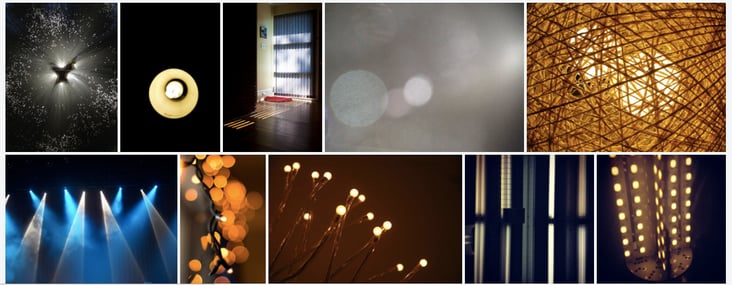This post is one in a series of feature stories on trends shaping advanced energy markets in the U.S. and around the world, drawn from Advanced Energy Now 2017 Market Report, which was prepared for AEE by Navigant Research.

The lighting industry is in the midst of two concurrent upheavals. First, light-emitting diode (LED) lighting is gaining market share rapidly over incumbent technologies, and second, lighting controls systems are making it possible to optimize the use of lighting in more sophisticated ways to save energy and money. Everyone from building owners and managers to lighting designers and installers is facing the challenge of this two-pronged transformation. But this transformation is paving the way for a third: the rise of “lighting as a service” (LaaS).
LaaS is defined broadly as the third-party management of lighting systems, which may include additional technical, maintenance, financial, or other services. These offerings can begin with the design and installation of a lighting system, continue through maintenance and management, and even include the recycling or disposal of equipment at the end of its life. Companies have begun to offer combinations of these services as they experiment with how best to meet their customers’ needs. These initial efforts represent the beginning of a trend that Navigant Research anticipates will grow rapidly over the next 10 years.
The possibilities for LaaS solutions are wide-ranging, allowing some companies to provide a continuum of offerings, while others simply layer additional services onto the equipment they sell. Current, a start-up within lighting heavyweight GE, is wrapping data and digital solutions around lighting upgrades with optional financing to provide a full suite of LaaS possibilities. Enlighted, a Sunnyvale, California–based startup, has developed a LaaS platform that combines sensors, analytics, and controls. But unlike other LaaS competitors, Enlighted does not use this platform to sell lighting hardware. Rather, the company partners with luminaire manufacturers, facilities management companies, and electrical contractors to create an ecosystem of lighting systems.
Numerous factors are converging to drive the market for LaaS:
- Looming declines in sales revenue: LED prices are forecast to continue fall, while the lifespan of LED lamps will continue to lengthen. Historically, a significant portion of total revenue in the lighting industry is based on the replacement of burned-out lamps. As a growing part of the installed base of lights is replaced with longer-lasting LEDs at falling prices, lighting equipment revenue will begin to decline. Engaging customers in lighting service contracts presents an opportunity for lighting companies to replace repeat sales of bulbs with recurring revenue from LaaS contracts.
- Technology marching on: Every aspect of a building’s systems has become more complicated, and lighting is no longer an exception. Rather than trying to keep up with the rapid changes in lighting technology themselves, building owners and managers are beginning to turn to third parties to provide these lighting systems for them.
- Compelling business case: Advanced lighting controls systems can save significant amounts of energy, but only with optimized operation. Perhaps even more important than direct energy savings, the information gained through a lighting system’s sensors can be used to inform space-use decisions and facilities management in a way that can significantly affect a user’s bottom line.
- Building codes: Updates to California’s Title 24, the American Society of Heating, Refrigerating and Air-Conditioning Engineers’ (ASHRAE) Standard 90.1 standard, and the International Energy Conservation Code include increasingly strict requirements for lighting control, from occupancy sensing, to daylight usage, to multi-step or continuous dimming. While none of these codes mandate a networked lighting controls system or third-party management, each requires a significant role for lighting controls. Bringing on a third party to provide LaaS and ensure that all building codes are met is an increasingly attractive choice.
Despite these long-term drivers, the LaaS market is currently in its infancy. Global revenue for these services is estimated at just $35.2 million in 2016; most existing projects are pilots and test cases. But as more lighting companies – as well as outside industry players such as IT integrators and facilities management service providers – enter this market, and as companies refine their business models and offerings to entice customers, Navigant Research forecasts that revenue will grow rapidly.
Through 2025, this market is forecast to grow at a compound annual growth rate (CAGR) of 52%, to a total of $1.6 billion in 2025, with North America representing half of that revenue. LaaS is on its way.
Learn more about advanced energy market trends by downloading the free report at the link below:
